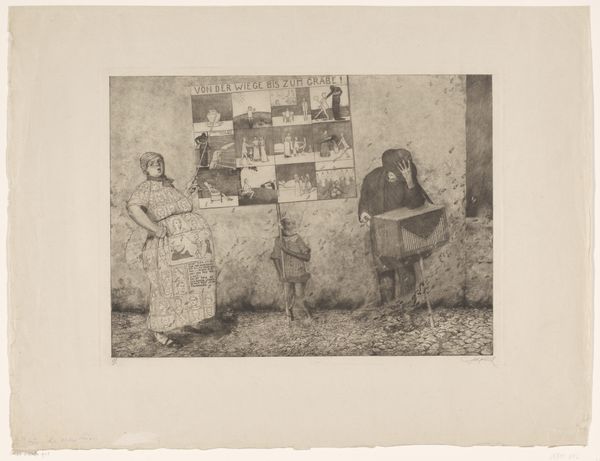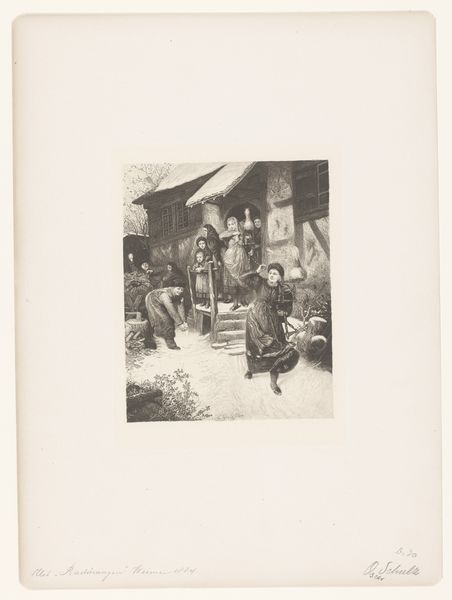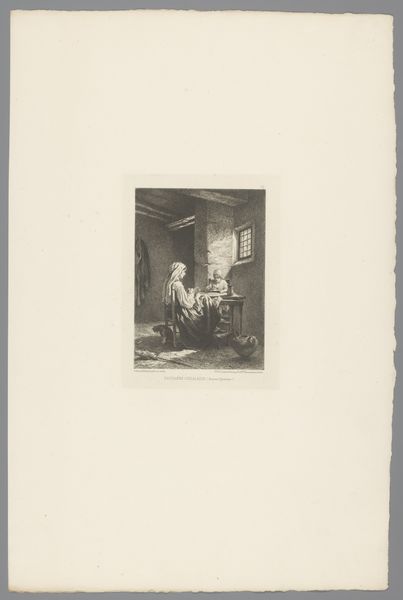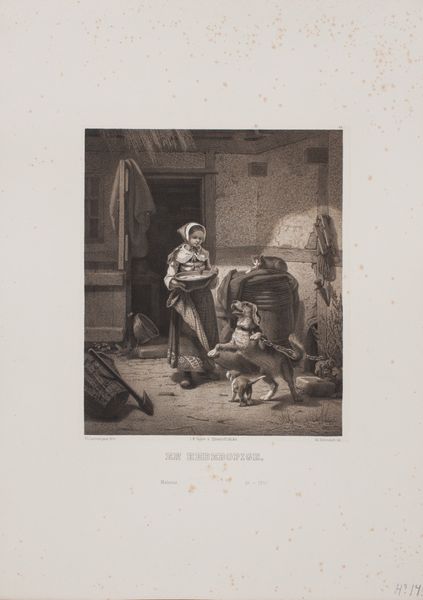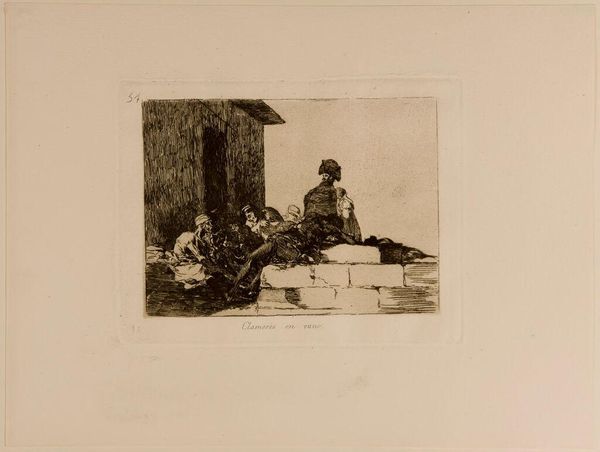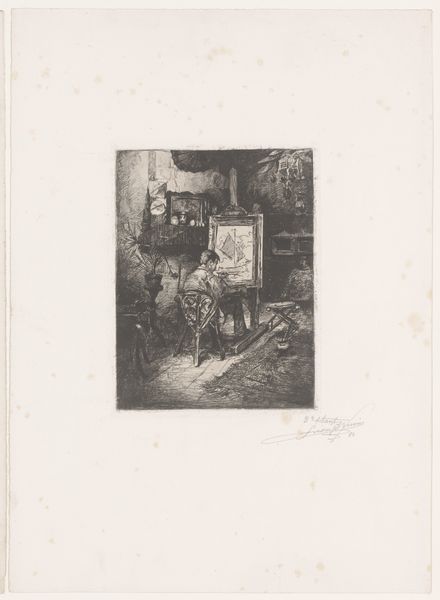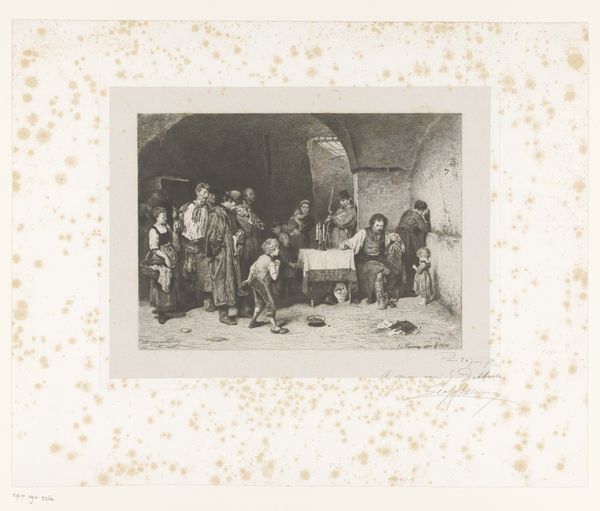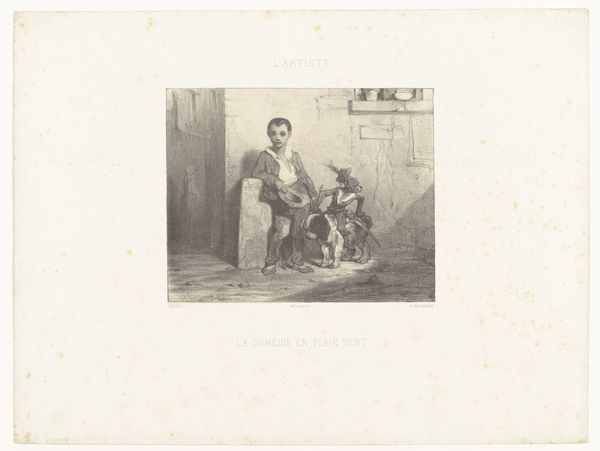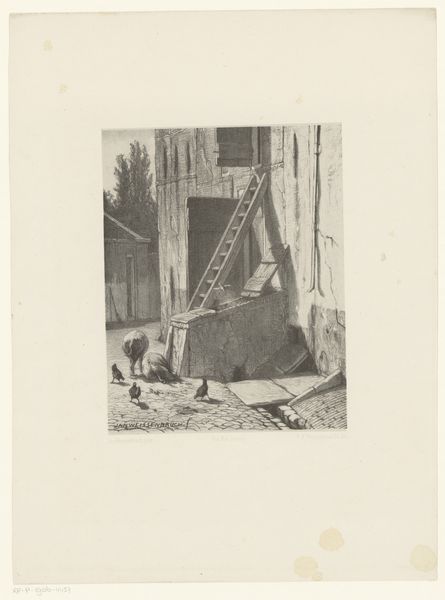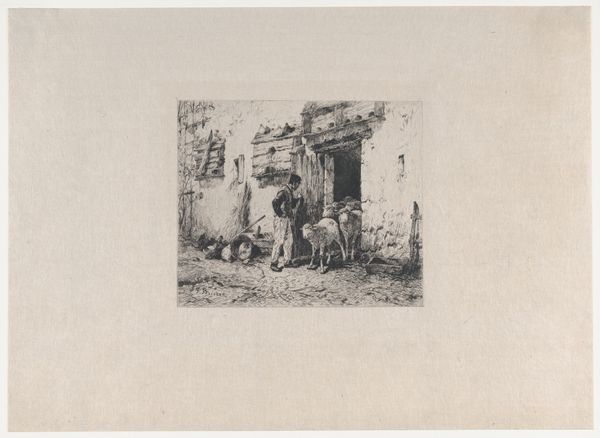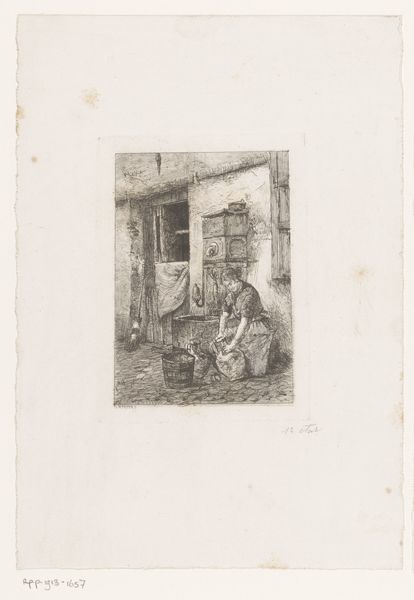
lithograph, print
#
lithograph
# print
#
landscape
#
genre-painting
#
northern-renaissance
#
realism
Dimensions: 405 mm (height) x 286 mm (width) (billedmaal)
Curator: Let’s take a closer look at this intriguing print, "Legende Børn I En Bondehave" or "Legend Children in a Farm Garden" as we'd say in English, from the 1880s. Adolph Kittendorff created this lithograph, currently held at the SMK in Copenhagen. What stands out to you immediately? Editor: The quietness. Even though it depicts children, there's a certain stillness, almost reverence, in the scene. And the thatch roof... it gives an immediate impression of rustic charm and simple life. It recalls archetypes of folk tales, which ties nicely to the “legend” aspect in the title. Curator: Absolutely. The rustic setting speaks volumes about the intended audience. Genre painting like this, which portrays scenes of everyday life, gained popularity as a way to depict and often romanticize peasant life for an increasingly urban audience. There’s a socio-political aspect here, reinforcing ideals of a simpler past as industrialization advanced. Editor: You see it as a projection of urban desires? Interesting. For me, the imagery evokes something deeper than just social commentary. The children are so absorbed in their activity around the table. I notice the dog—almost an otherworldly guardian, watching silently. Could the legend be less about societal notions, and more about something ancient being kept alive, passed down through the generations represented by those children? Curator: That’s a compelling point, but how do we disentangle that deeper meaning from the societal forces shaping the work? These images rarely exist in a vacuum. Kittendorff himself worked as a lithographer producing these prints. How were these images being consumed, and how did that inform the visual language of the image itself? For example, we might ask about the role of images in shaping Danish national identity around this time? Editor: Valid questions, no doubt, but consider the evergreen presence of childhood itself, of the domestic space, the shared activity and quiet vigilance, wouldn't this image tap into something nearly universal that pre-dates social narratives about rustic charm and simple pleasures? It suggests the persistence of symbols—home, hearth, protection—irrespective of where or how they're seen. Curator: Perhaps we can conclude that art often succeeds by operating on multiple levels at once. It can reflect and reinforce social narratives while simultaneously tapping into deeply rooted, perhaps universal, human experiences and their symbolic expression. Editor: I think that captures it perfectly: a meeting place between historical context and eternal symbolism.
Comments
No comments
Be the first to comment and join the conversation on the ultimate creative platform.

